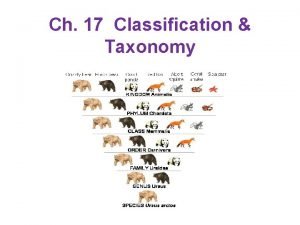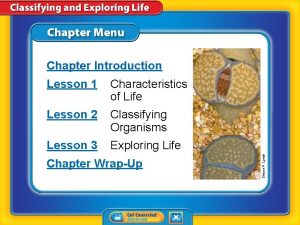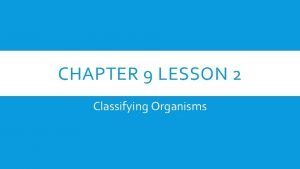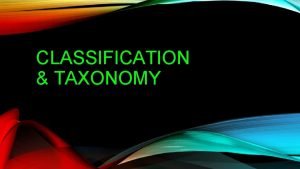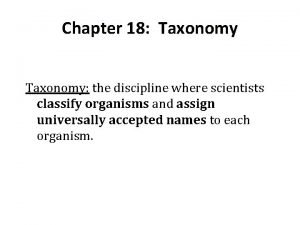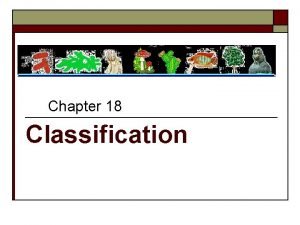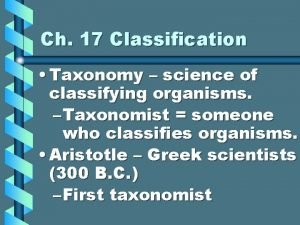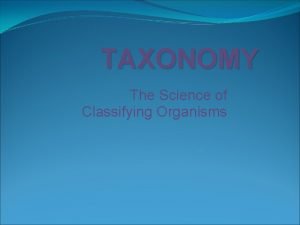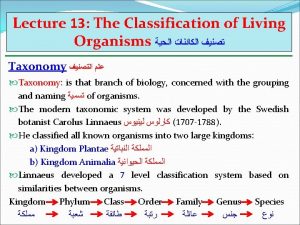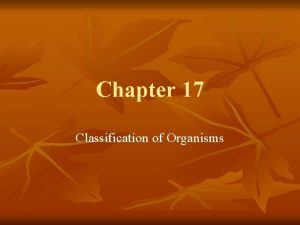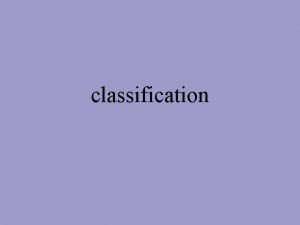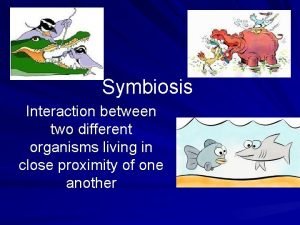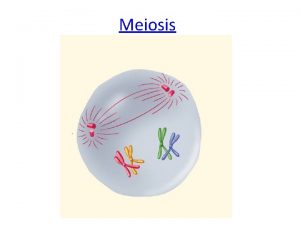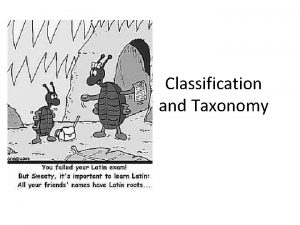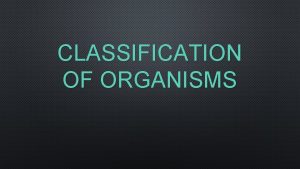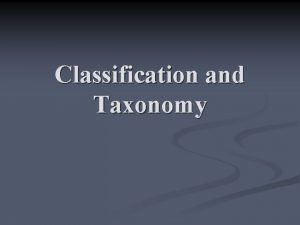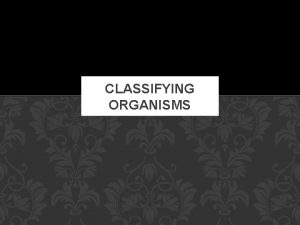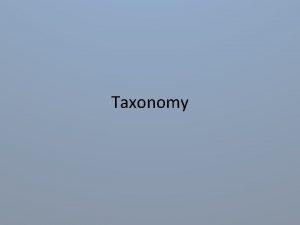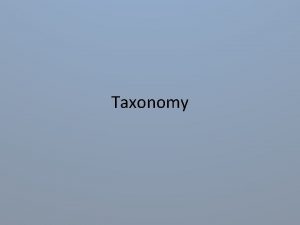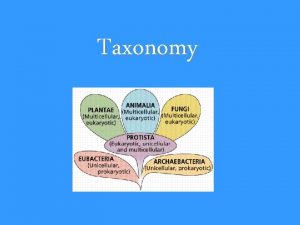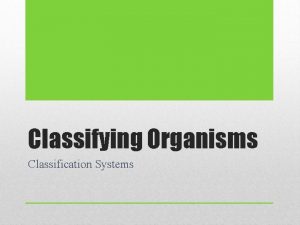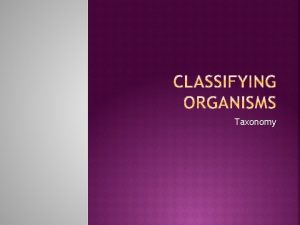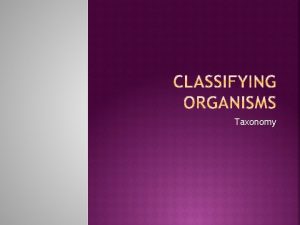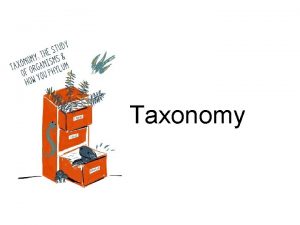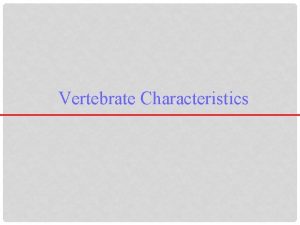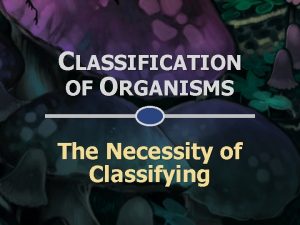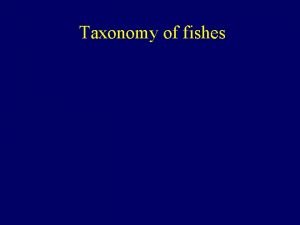Classifying Organisms Taxonomy Hierarchical system of classification Different
























- Slides: 24

Classifying Organisms

Taxonomy • Hierarchical system of classification – Different levels of specificity • Purpose – Scientific name – allows precise identification • Genus species • Example - Homo sapiens – Grouping according to evolutionary relationships



Species • Group of organisms that: – Share fairly consistent appearance and function – Can be distinguished from other organisms – Interbreed • Approximately 1. 4 million species identified • Estimated 10 million in existence


Variation Within a Species

Taxon • Named taxonomic unit at a particular hierarchical level – Domain – Kingdom – Phylum – Class – Order – Family – Genus – Species Most Inclusive Least Inclusive




Structural Relationships • Homologous – Similar structures – Shared ancestor – Often differ because of divergent evolution • Analogous – Similar structures – Different ancestors – Product of convergent evolution

Phenetics • Grouping according to sum of shared characteristics – Individual characteristic are equal in significance

Cladistics • Grouping according to evolutionary divergence – Cladogram – a graphical representation of evolutionary relationships • Each branch point is assigned a homology – Derived Character



Types of groupings • Monophyletic – Single ancestor • Polyphyletic – Multiple ancestors – Not an acceptable grouping • Paraphyletic – Excluded species share common ancestor



Bacteria • Prokaryotes • Most primitive organism – Many highly specialized forms • Most abundant on earth – Found everywhere • 12 -15 major groups • Evolved efficient methods to harness energy – Aerobic respiration – Photosynthesis

Archaea • Prokaryotes • Diverged from Bacteria • Three categories – Methanogens – Extremophiles – Nonextreme archaebacteria

Eukarya • Eukaryotes • Complex organelles • Most have energy organelles – Mitochondria – Chloroplasts • Includes organisms with the following: – Sexual reproduction – Diploid genomes – Multicellular

Origin of Eukaryotes

 What is the hierarchical system used to classify organisms?
What is the hierarchical system used to classify organisms? Science of naming and classifying organisms
Science of naming and classifying organisms Lesson 2 classifying organisms answer key
Lesson 2 classifying organisms answer key Classifying organisms worksheet
Classifying organisms worksheet Lesson outline classifying organisms
Lesson outline classifying organisms Lesson 2 classifying organisms answer key
Lesson 2 classifying organisms answer key Fungi cell
Fungi cell Discipline of classifying and naming organisms
Discipline of classifying and naming organisms The science of naming and classifying organisms
The science of naming and classifying organisms The scientific discipline of classifying organisms
The scientific discipline of classifying organisms Kingdom animalia cladogram
Kingdom animalia cladogram Discipline of classifying and naming organisms
Discipline of classifying and naming organisms Kendall's and marzano's new taxonomy verbs
Kendall's and marzano's new taxonomy verbs Dear king phillip came over
Dear king phillip came over Binomial nomenclature consists of two names *
Binomial nomenclature consists of two names * Most general to most specific classification
Most general to most specific classification 8 major levels of classification
8 major levels of classification Taxonomy in biology
Taxonomy in biology Hierarchy of classification
Hierarchy of classification Competitive interaction
Competitive interaction Single celled and multicellular organisms
Single celled and multicellular organisms Close interaction between two different organisms
Close interaction between two different organisms Meiosis
Meiosis Different types of living organisms
Different types of living organisms Tetrad meiosis
Tetrad meiosis
